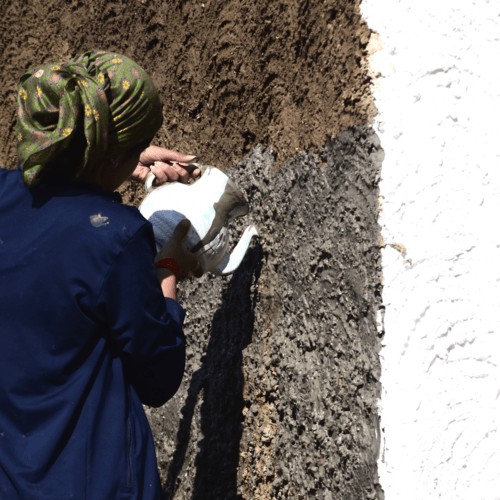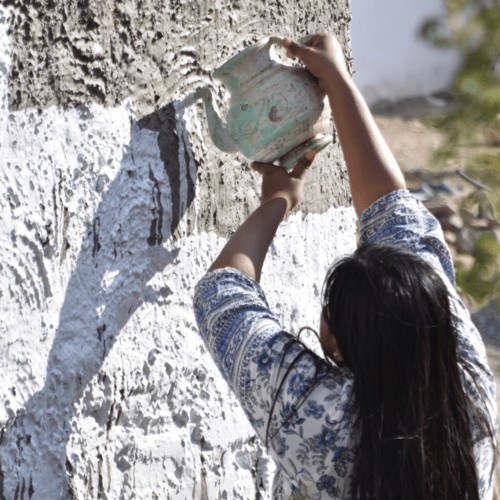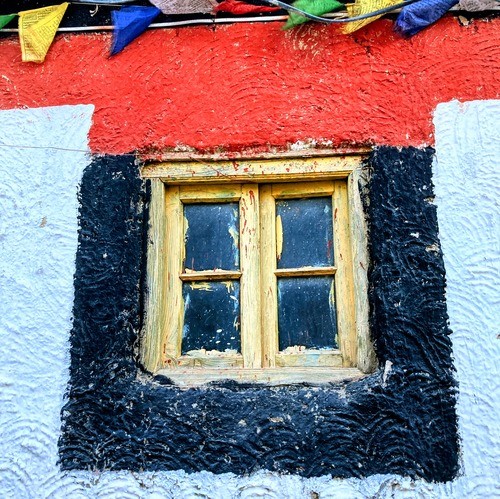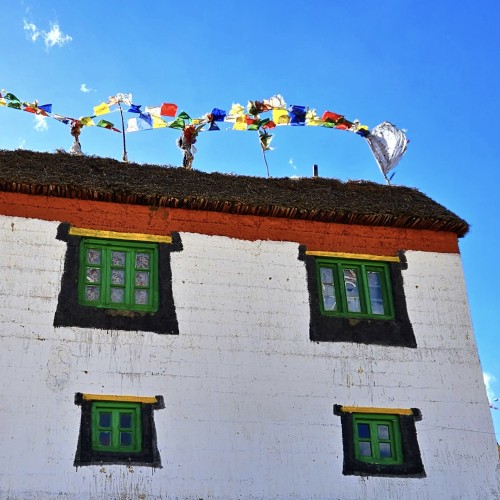
One Day Earthen Plasters Workshop in Spiti
This workshop can be arranged as a stand alone event as part of your longer Spiti tour or we can tailor a tour from Kinnaur to Spiti exploring the diverse architecture and culture along the way.
Thjs is an entirely practical, hands on experience. Particpants will immerse themselves in the world of natural plasters. They will learn by doing. They will practice the entire process of plastering on a live site.
Practical Sessions
- Introduction to materials
-
Identifying appropriate materials from the local context
-
Introduction to the Tools
-
Preparation and application of base plaster
-
Preparation and application of Tua - Second layer
-
Preparation and application of Lime wash
-
Preparation and application of natural pigments and ornamentation
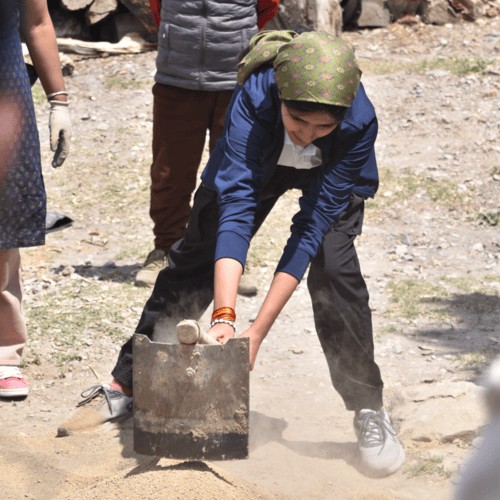

Learning Outcomes
- Deep analysis of indigenous architectural knowledge systems
- Exposure to practical design thinking
- Learning from the past to design for the future
- Appreciation for the need of cultural heriatge conservation pertaining to architectural knowledge systems.
- In depth understanding of the unique vernacular traditions of the Spiti Valley
Learning by Interacting
Whilst this is an entirely practical workshop where students become immersed in the natural plasters of the region. Throughout the day the students work alongside Master Crafstmen and women from Spiti. During which they are exposed to ideas of sustainabilitry, circular architectural systems and climate responsive architecture. Whilst these are modern terms for a process of architecture that strives to reduce its impact on the planet. These topics are fundamental to the vernacular practices in Spiti Valley and always have been. The people of the Spiti Valley have been practicing sustainable architecture for generations. Well before the term was even coined.
***Images shared on this page are from a private workshop hosted for Karwaan in June 2024.
Spiti Valley Context
Spiti Valley is home to a thriving vernacular architectural tradition. All natural construction, utilising locally abundant material resources to create climate appropriate dwellings that reflect the culture and ingenuity of the people who call these mountains home.
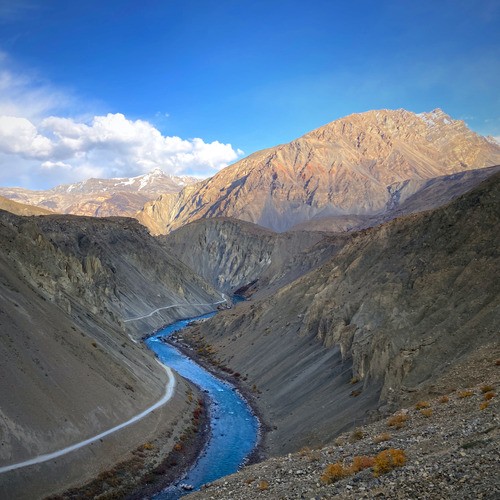
Ethnically Tibetan, the homes of the Spitian people reflect their cultural connection to the broader Tibetan community that spans from Ladakh in the west to Bhutan and Sikkim in the east and Lhasa in the north.
Rammed earth is the predominant typology in the region, though Nako village is one exception with a preference for stone masonry and more elaborate timber ornamentation.

Earthen Plasters
Fusing function with form is a standard feature of vernacular architecture. The earthen plasters of Spiti Valley are no exception. Whilst they undoubtedly provide great aesthetic appeal, an exploration beyond superficial appearances reveals numerous structural benefits as well.
Hand shaped base plasters result in a striking textured finish. The furrowed sweeping arcs cutting the path of errant water from snow melt or driving rain, reducing the velocity of flow and preventing erosion.
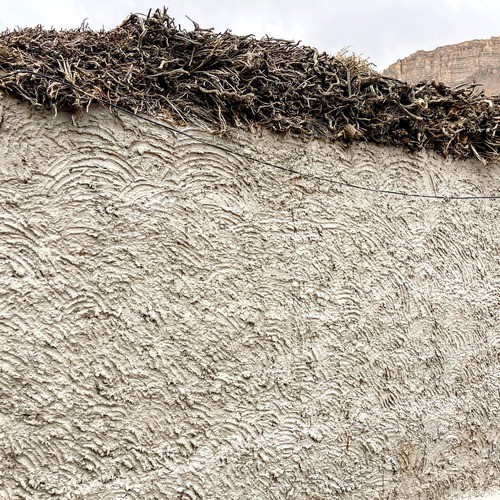
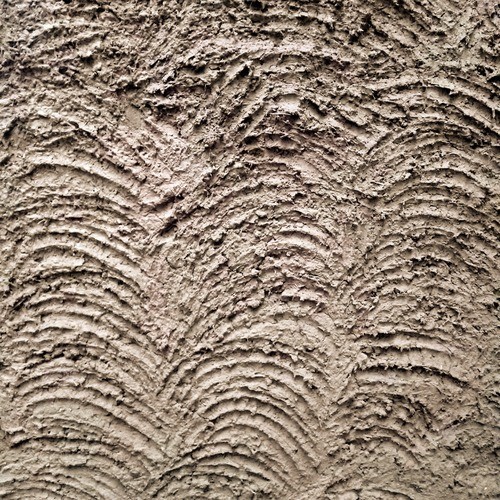
Tua, a rich clay is used as a consolidating layer over the base plaster. Helping to prevent water ingress to the walls below.
Lime wash as the top coat provides a final layer of water resistance and consolidation of the earthen plasters that came before. At the same time this practice serves a cultural role of purification.
Natural pigments sourced locally carry symbolic spiritual significance whilst adding character and recognisably Tibetan aesthetics.
Red pigment known locally as Tsak marwo is sourced from a yellow stone that is ground to a powder, then roasted over a fire, resulting in a deep red mineral pigment. The red is used to create a band around the very top part of the exterior walls. Red symbolising compassion and loving kindness.
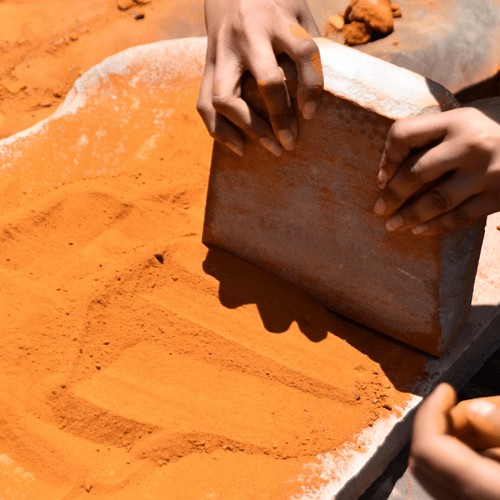
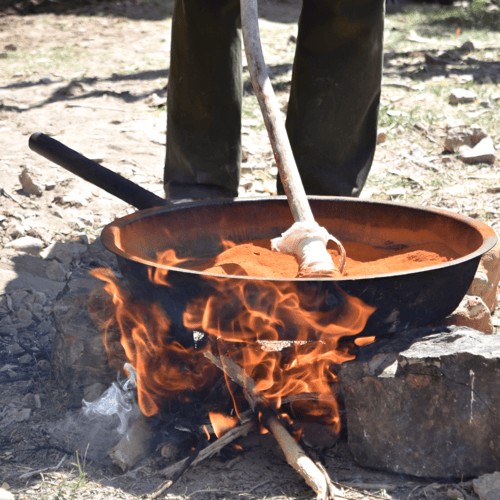
Black is traditionally utilised around the windows and doors, creating a striking feature whilst at the same time acting as a heat sink around external openings, capturing the warmth of the sun.
We are happy to create a tailored workshop according to the specific learning outcomes required by your institution. Please send us an email or whatsapp enquiry for further details.
